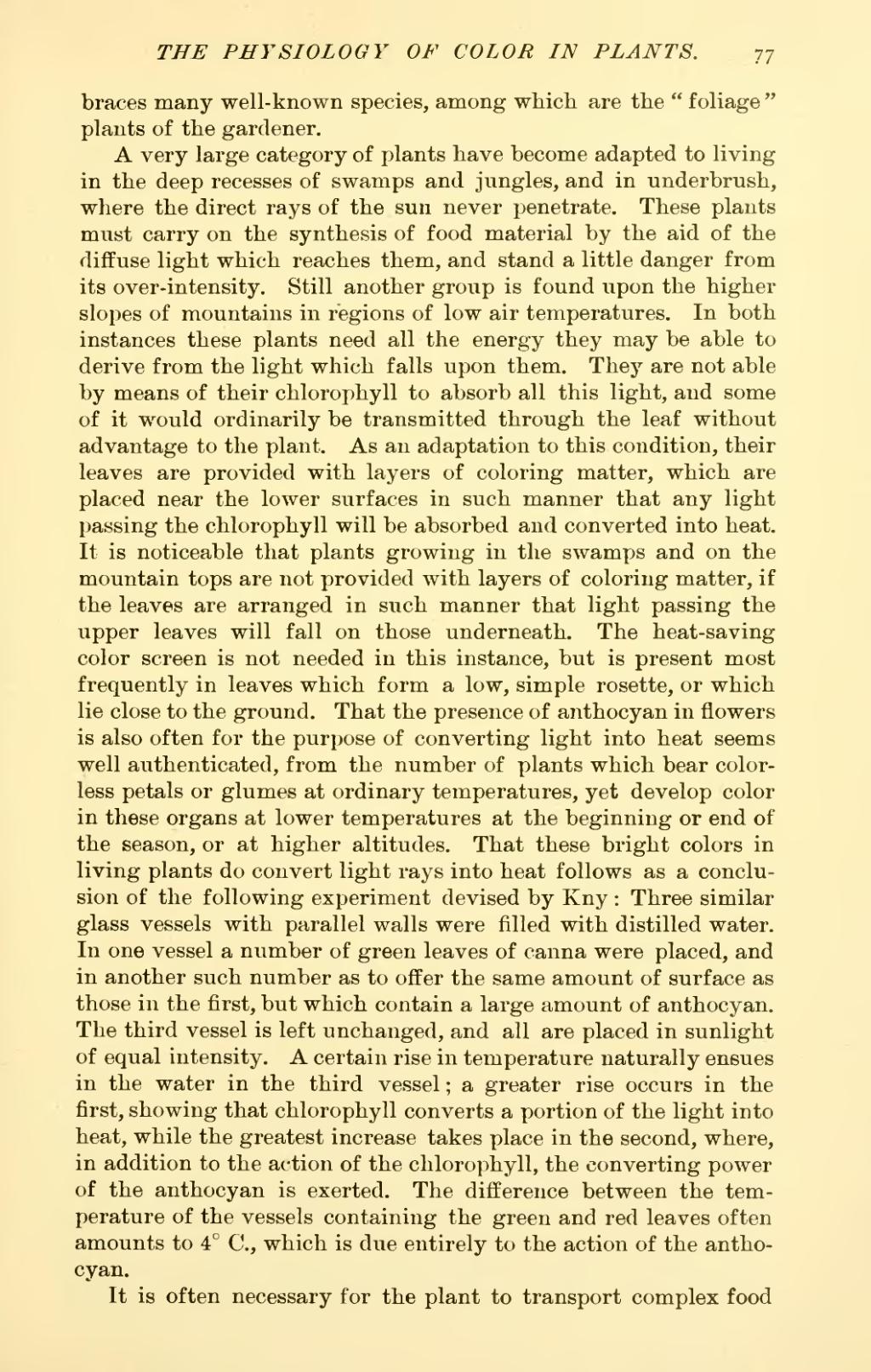braces many well-known species, among which are the "foliage" plants of the gardener,
A very large category of plants have become adapted to living in the deep recesses of swamps and jungles, and in underbrush, where the direct rays of the sun never penetrate. These plants must carry on the synthesis of food material by the aid of the diffuse light which reaches them, and stand a little danger from its over-intensity. Still another group is found upon the higher slopes of mountains in regions of low air temperatures. In both instances these plants need all the energy they may be able to derive from the light which falls upon them. They are not able by means of their chlorophyll to absorb all this light, and some of it would ordinarily be transmitted through the leaf without advantage to the plant. As an adaptation to this condition, their leaves are provided with layers of coloring matter, which are placed near the lower surfaces in such manner that any light passing the chlorophyll will be absorbed and converted into heat. It is noticeable that plants growing in the swamps and on the mountain tops are not provided with layers of coloring matter, if the leaves are arranged in such manner that light passing the upper leaves will fall on those underneath. The heat-saving color screen is not needed in this instance, but is present most frequently in leaves which form a low, simple rosette, or which lie close to the ground. That the presence of anthocyan in flowers is also often for the purpose of converting light into heat seems well authenticated, from the number of plants which bear colorless petals or glumes at ordinary temperatures, yet develop color in these organs at lower temperatures at the beginning or end of the season, or at higher altitudes. That these bright colors in living plants do convert light rays into heat follows as a conclusion of the following experiment devised by Kny: Three similar glass vessels with parallel walls were filled with distilled water. In one vessel a number of green leaves of canna were placed, and in another such number as to offer the same amount of surface as those in the first, but which contain a large amount of anthocyan. The third vessel is left unchanged, and all are placed in sunlight of equal intensity. A certain rise in temperature naturally ensues in the water in the third vessel; a greater rise occurs in the first, showing that chlorophyll converts a portion of the light into heat, while the greatest increase takes place in the second, where, in addition to the action of the chlorophyll, the converting power of the anthocyan is exerted. The difference between the temperature of the vessels containing the green and red leaves often amounts to 4° C, which is due entirely to the action of the anthocyan.
It is often necessary for the plant to transport complex food
